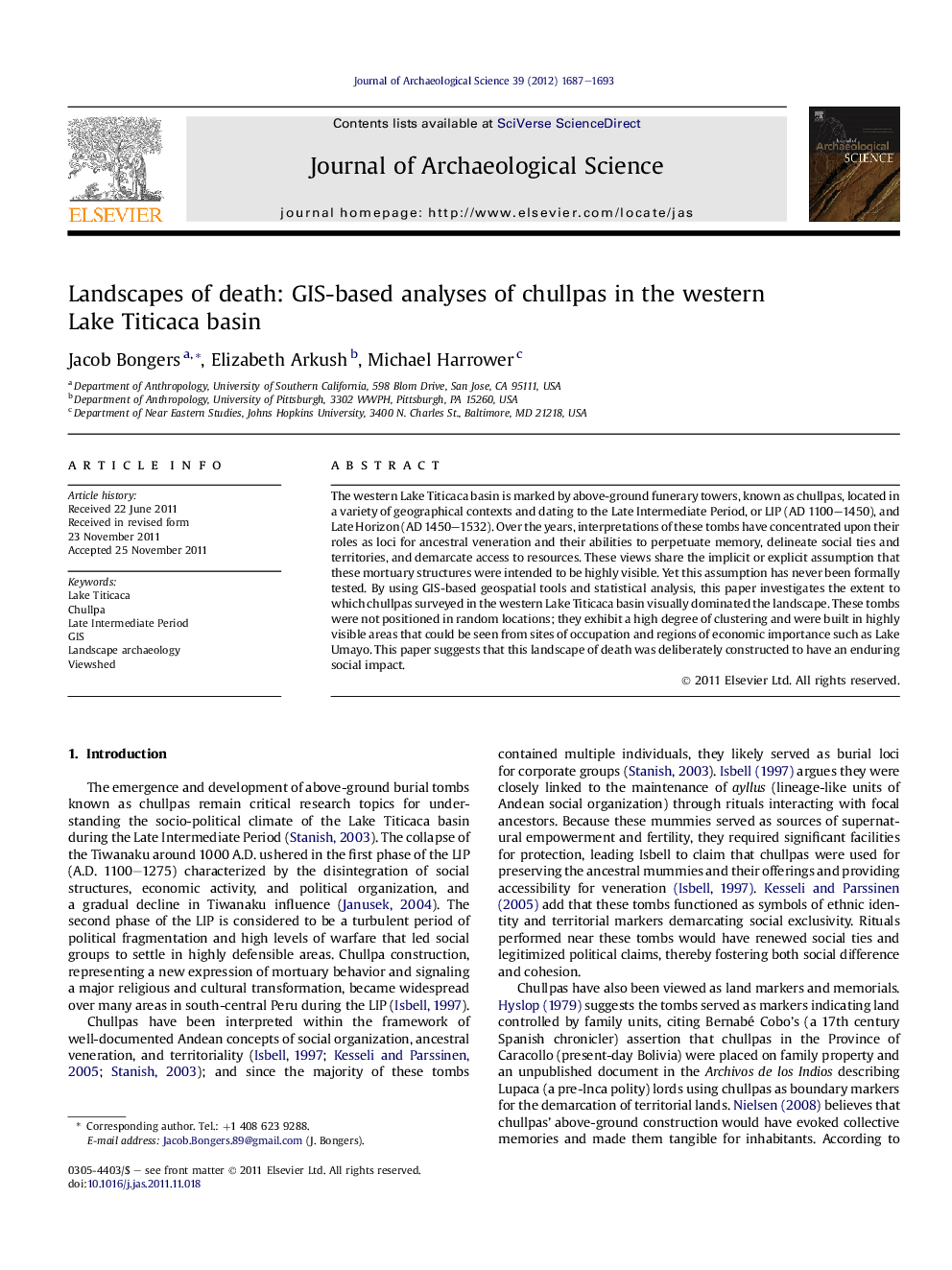| Article ID | Journal | Published Year | Pages | File Type |
|---|---|---|---|---|
| 1035674 | Journal of Archaeological Science | 2012 | 7 Pages |
The western Lake Titicaca basin is marked by above-ground funerary towers, known as chullpas, located in a variety of geographical contexts and dating to the Late Intermediate Period, or LIP (AD 1100–1450), and Late Horizon (AD 1450–1532). Over the years, interpretations of these tombs have concentrated upon their roles as loci for ancestral veneration and their abilities to perpetuate memory, delineate social ties and territories, and demarcate access to resources. These views share the implicit or explicit assumption that these mortuary structures were intended to be highly visible. Yet this assumption has never been formally tested. By using GIS-based geospatial tools and statistical analysis, this paper investigates the extent to which chullpas surveyed in the western Lake Titicaca basin visually dominated the landscape. These tombs were not positioned in random locations; they exhibit a high degree of clustering and were built in highly visible areas that could be seen from sites of occupation and regions of economic importance such as Lake Umayo. This paper suggests that this landscape of death was deliberately constructed to have an enduring social impact.
► We examine how chullpa tombs visually dominate landscapes. ► GIS is used to calculate viewsheds and extract elevation values. ► Large viewsheds are more associated with chullpas than random points. ► Chullpa viewsheds concentrate in certain areas. ► Chullpas under review are not randomly distributed in the landscape.
